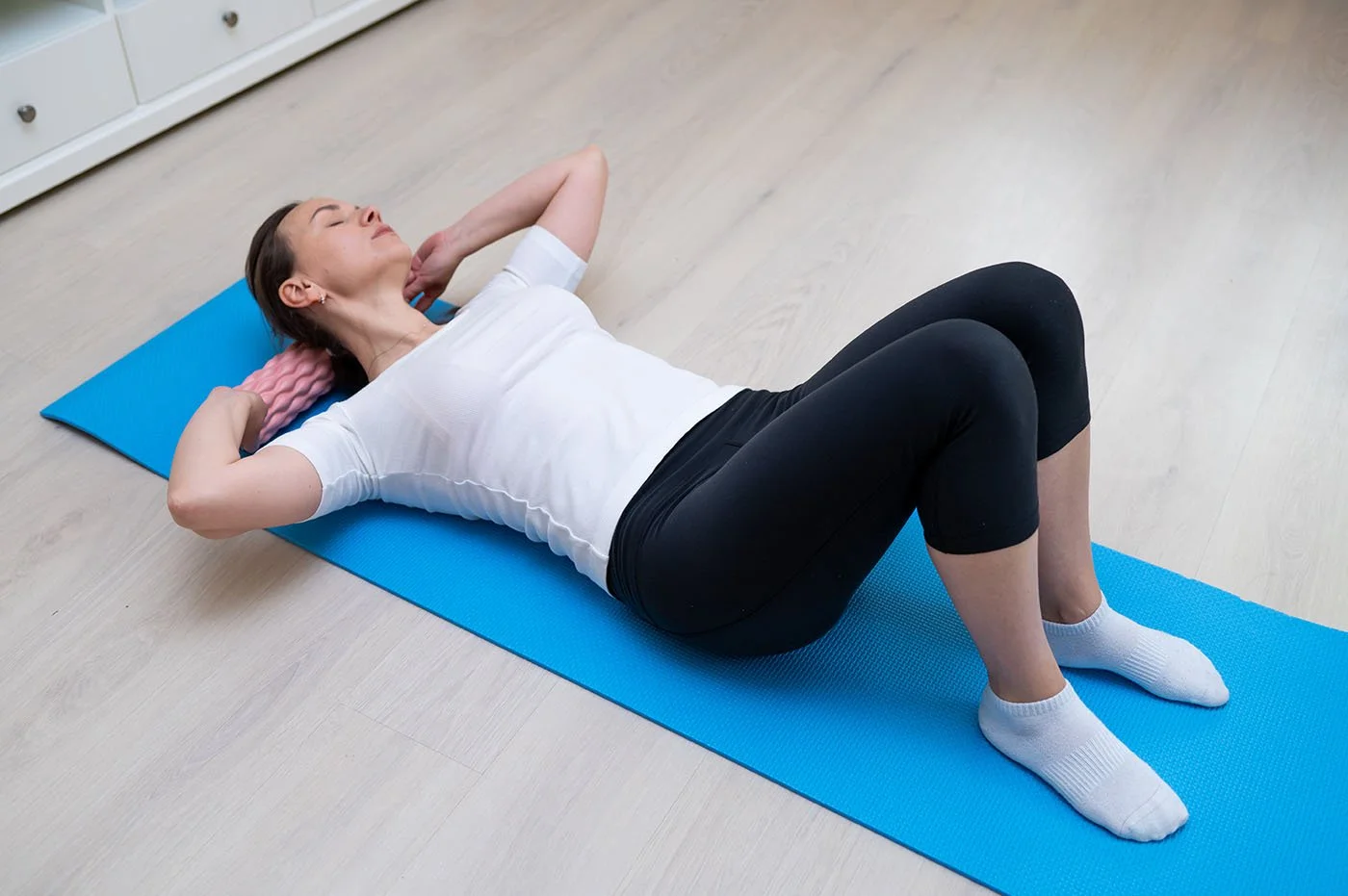Core Performance: How Purposeful Breathing Builds Strength, Stability, and Better Movement
Core Performance: How Purposeful Breathing Builds Strength, Stability, and Better Movement
Certified Trainer Kim Duke explains how improving your breathing technique enhances core strength, posture, and pain-free performance.
Every article I write, I share a simple premise: Strength training isn’t just about building muscle - it’s about giving your body a safe foundation for powerful, pain-free movement. In this article, my focus is on your breathing. Training your breathing to work in tandem with your muscles builds integrated strength that your nervous system can trust, allowing you to move through life with confidence and ease.
During workouts, do you think about your breathing? Or does it just happen in the background? Most people understand the importance of proper exercise form, yet they often overlook the significance of breathing technique. How and when you breathe during strength training directly affects muscle engagement, core stability, and power output, as well as the position of your rib cage, spine, and pelvis.
Your diaphragm isn’t responsible only for moving air in and out of your lungs. As a core stabilizing muscle, the diaphragm works with your pelvic floor, deep abdominals, and back muscles to create postural alignment and internal abdominal pressure that support your spine. When you breathe properly during exercise, you’re not just getting oxygen to your muscles - you’re actively engaging your body’s natural stabilization system.
Poor breathing habits during strength training can create multiple problems. Holding your breath increases blood pressure and reduces oxygen delivery to working muscles. Shallow chest breathing lifts your rib cage and elevates your shoulders with every breath, causing other muscles to compensate, which causes tension in your neck and upper back. And using the wrong phase of breath at the wrong time weakens your movements and increases your risk of injury.
When you exhale purposefully while working out, several beneficial things happen simultaneously. Your diaphragm rises as your obliques and deep core contract to align your rib cage over your pelvis and stabilize your spine. Your pelvic floor naturally lifts, enabling a better connection with your inner thighs. And your scapulae can settle into a stable position on your rib cage. This coordinated activation creates internal stability and alignment that allows your larger muscle groups to generate more force. The timing matters as much as the technique. Exhaling during the effort phase of movements allows you to actively create this stabilization effect when you need it most.
One of the simplest ways to evaluate your breathing is by lying on your back with your knees bent and feet on the floor. Place your hands on your lower ribs on either side of the area where your rib cage splits below your sternum.
Spend a few moments taking some deep breaths, noticing where the movement happens. If you experience tightening or movement in your neck, upper chest or shoulders, or your ribs barely move, those are signs you may be breathing shallowly and not using your diaphragm effectively. Try taking a few more breaths, directing your breath into the lung space under your lower ribs. With each inhale, feel for lateral expansion of your ribs under your hands. With each exhale, feel your rib cage move down and your lower ribs move in, promoting a natural core engagement to support the movement.
The awareness and proficiency you develop through a regular breathwork practice becomes even more powerful when applied to physical activity. Integrating improved breathing mechanics into your daily life will make your movement feel more fluid, connected, and efficient.
Remember, your breath isn’t just a background function. By restoring proper breathing, you support better posture, deeper core strength, smoother movement, and a more resilient nervous system.
—————————
Kim Duke is a certified personal trainer and owner of Core Performance Fitness and Training, 55 Bristol Lane, Ellicottville, NY. Kim resides in Ellicottville where she raised her sons, Zach and Nik. For more information about her studio, including private sessions and group workout classes, visit her Facebook page, www.coreperformancefitness.com or call 716-698-1198.

